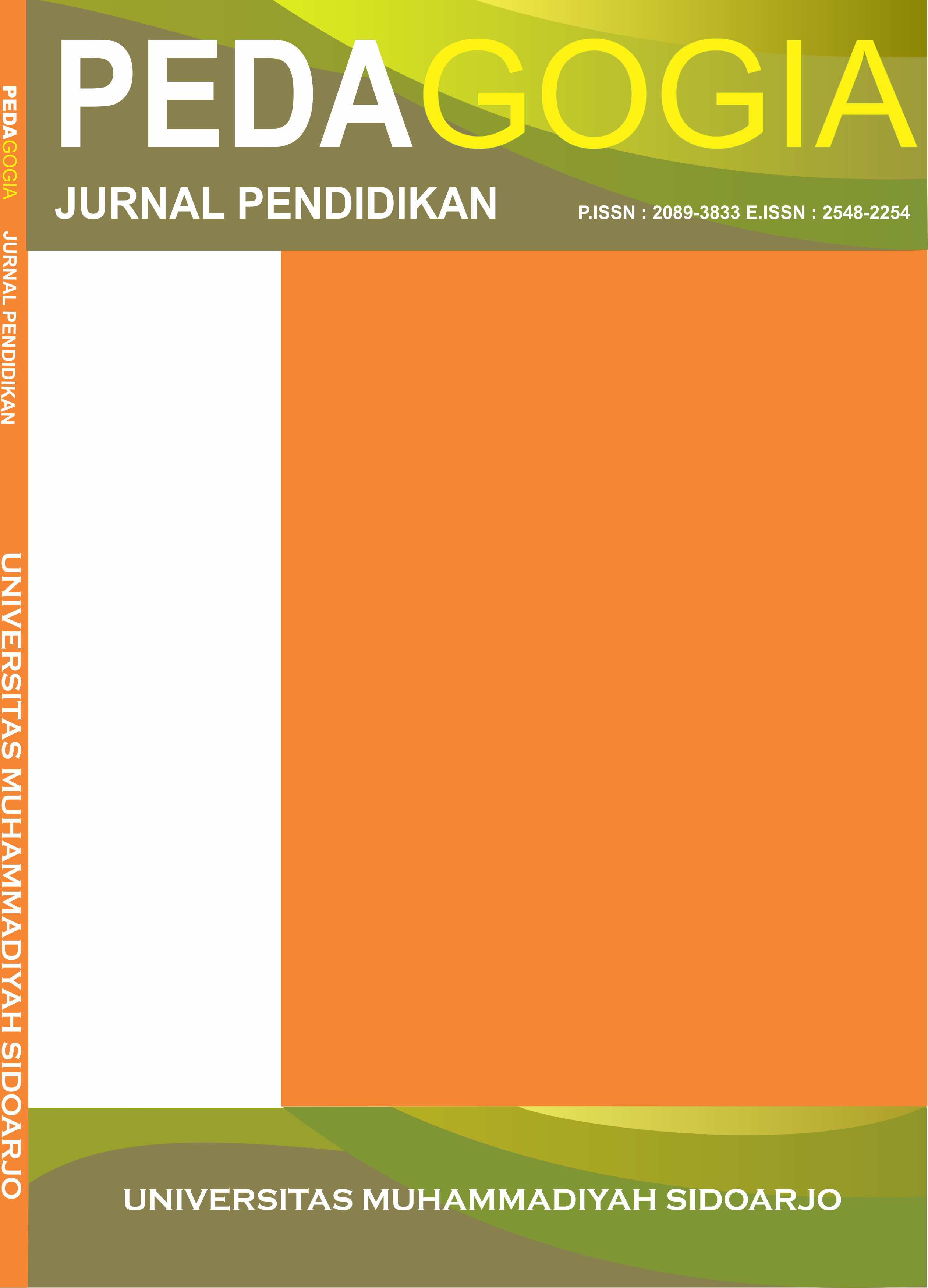Keterampilan Menulis Karangan Narasi pada Anak Gifted with Disynchronous Development (Studi Tunggal pada Satu Subjek)
Narrative Writing Skills in Children Gifted with Disynchronous Development (Single Study on One Subject)
DOI:
https://doi.org/10.21070/pedagogia.v6i1.606Keywords:
Narrative Essay, Gifted Children with Dysnchronous Development, InclusionAbstract
This case study described twelve narrative essays of Miko within aspects of language, cognitive, and affective. Miko is Gifted child With Disynchronous Development. The results indicated that the narrative essays in aspects of language, cognitive, and affective, as follows: 1) organizing content according to the narrative structure that consists of five components, namely opening, inciting moment, development stage, denouement and ending; 2) choice of words (diction) that appear in the narrative essays are general and specific words, abstract, slang, foreign, and a figure of speech metaphor; 3) the sentences that appear in the narrative essays are simple sentence, compound sentence, and complex sentence; 4) tools of cohesion grammatical in the narrative essays are reference, substitution, ellipsis, and conjunction; and 5) specific style of spelling was found consistently in the narrative essays; 6) cognitive skill of Miko in the narrative essays is inference; and 7) affective skill of Miko are openness, sympathetic, gracious, and emphathetic in the narrative essays.
References
Abbot. H. Porter. 2002. The Cambridge Introduction to Narrative. Cambridge: Cambridge University Press.
Abdurrahman, Mulyono. 2012. Anak Berkesulitan Belajar (teori, diagnosis, dan remediasinya). Jakarta: PT Rineka Cipta.
Direktorat Pembinaan Sekolah Luar Biasa. 2008. Pengadaan dan pembinaan tenaga kependidikan dalam pendidikan inklusif. Jakarta: Dit PSLB Depdiknas (Juni 2008)
Ghufron, Syamsul. 2012. Perkembangan Kompetensi Kewacanaan Bahasa Indonesia Tulis Anak Usia 9-11 Tahun. Tesis magister pendidikan tidak dipublikasikan. Universitas Negeri Surabaya.
Keraf, Gorys. 2007. Argumentasi dan Narasi. Jakarta: Gramedia Utama.
Hayyu, Yasmin Aulia. 2008. Analisis Narasi yang Ditulis oleh Siswa Kelas 4 Sekolah Dasar Negeri. Skripsi Fakultas Ilmu Pengetahuan dan Budaya tidak diterbitkan. Jakarta: Universitas Indonesia.
Kumalaningrum, Ratih. 2012. Pola Kalimat Bercerita Anak Autis: Studi Kasus terhadap Tiga Anak Autis Usia 8-11 Tahun. Skripsi Fakultas Ilmu Pengetahuan dan Budaya tidak diterbitkan. Jakarta: Universitas Indonesia.
Kridalaksana, Harimurti, dkk. 2005. Kelas Kata dalam Bahasa Indonesia. Jakarta: PT. Gramedia.
Maria, Julia. 2008. Anakku Terlambat Bicara. Jakarta: Prenada Media Group.
Murdock-Smith. 2013. Understanding the Social and Emotional Needs of Gifted Children. InSight: Rivier Academic Journal, Volume 9, Number 2, FALL 2013
Medwell et al. 2005. Primary English: Knowledge and Understanding. Exeter: Learning Master.
Monks, J.F.and Katzko, M.W.. 2005. Giftedness and Gifted Education In Conception of Giftedness-ed: Stenberg, J.R.&Davidson, J.E.. Cambridge University press, NY.
Nunik, Rahmawati. 2009. Analisis Kohesi-Analisis Koherensi (Fakultas Ilmu Bahasa). Universitas Indonesia.
Nurgiyantoro, Burhan. 1988. Penilaian dalam Pengajaran Bahasa dan Sastra. Yogyakarta: BPFE.
Silverman, Linda Kreger. 2013. Upside Down Brilliance: The Visual Spatial Learner. Nebraska: Nebraska Association for The Gifted.
Sugiyono. 2010. Metode Penelitian Kuantitatif, Kualitatif, dan R&D. Bandung: Alfabeta, CV.
Tarigan, Henry Guntur. 2008. Menulis (sebagai suatu keterampilan berbahasa).Bandung: Angkasa Bandung.
Wilkinson, A. 1983. “Assesing Language Development: The Crediton Projek”, dalam Learning to Write: First Language/Second Language. London & New York: Longman.
Zainurrahman. 2011. Menulis: Dari Teori hingga Praktik (penawar racun plagiarisme). Bandung: Alfabeta.
Downloads
Published
How to Cite
Issue
Section
License
Authors retain copyright and grant the journal right of first publication with the work simultaneously licensed under a Creative Commons Attribution 4.0 International License that allows others to share the work with an acknowledgement of the work's authorship and initial publication in this journal.








